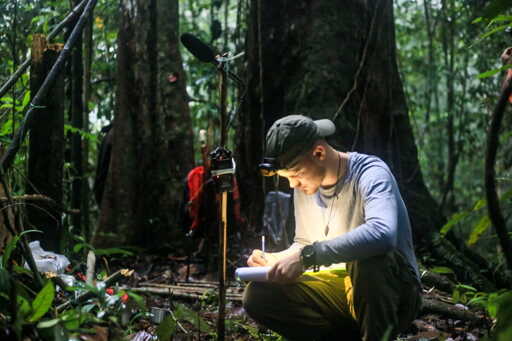Riding in a helicopter, Fabiano Melo, with the Federal University of Viçosa, Brazil, searched for the elusive northern muriqui (Brachyteles hypoxanthus), a large monkey in the northern Atlantic Forest of Brazil. Flying over evergreen canopies with trees as tall as buildings, the researchers tried to spot light brown monkeys moving between branches. Finally, after almost one hour, they found one. Seeing the helicopter, the monkey started shaking the branches fiercely. It then tried to move out of sight, jumping from branch to branch as if doing parkour. At the same time, Melo took video of the monkey’s agile movements as it disappeared into the canopy. Even though the animal got away easily, the researchers now had an idea of where to look for them. “The problem is that they have very low densities … and if you go inside the forest and try to track animals [by] walking, it’s almost impossible to find them,” Melo told Mongabay. Primatologists — scientists who study nonhuman primates such as apes, monkeys and lemurs — once considered the northern muriqui among the world’s 25 most endangered primates. Habitat loss, isolated populations and hunting have made this elusive species critically endangered. If Melo wanted to find the muriquis to understand their distribution, he needed to improve his tactics fast. New technologies gave Melo a possible solution: fewer helicopters, more drones. In 2017, Melo started to build the “dronequi,” a customized drone with high-definition and thermal cameras, allowing him to find and follow the monkeys more…This article was originally published on Mongabay
From Conservation news via this RSS feed


